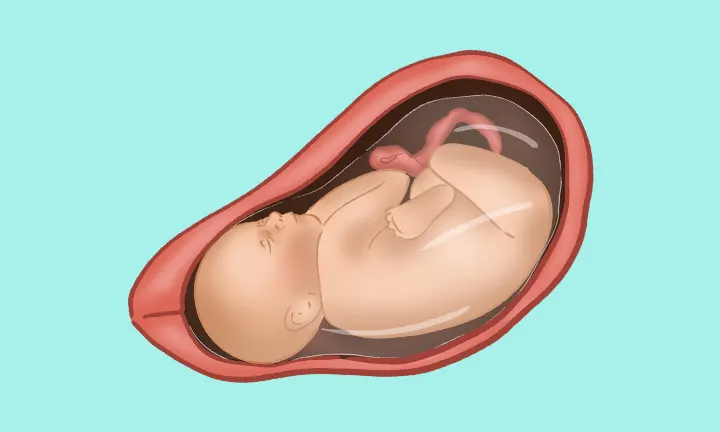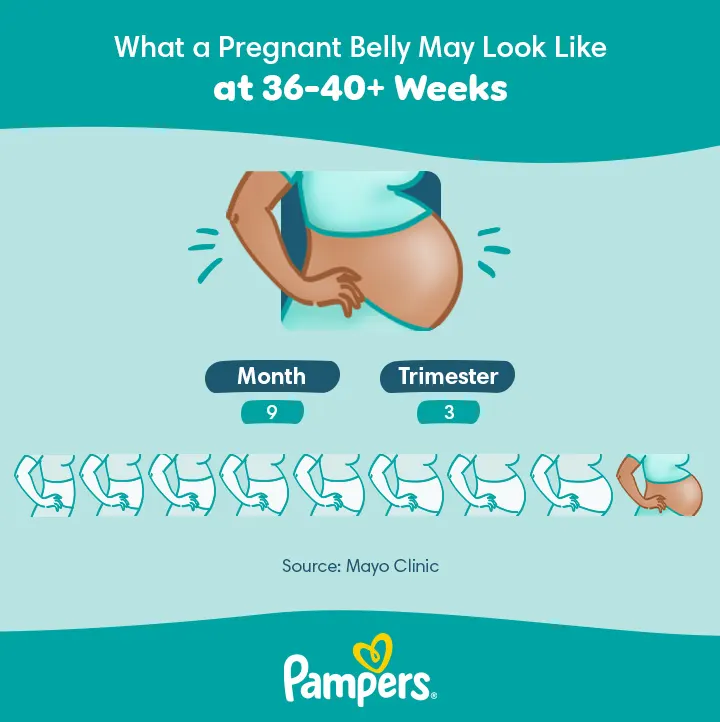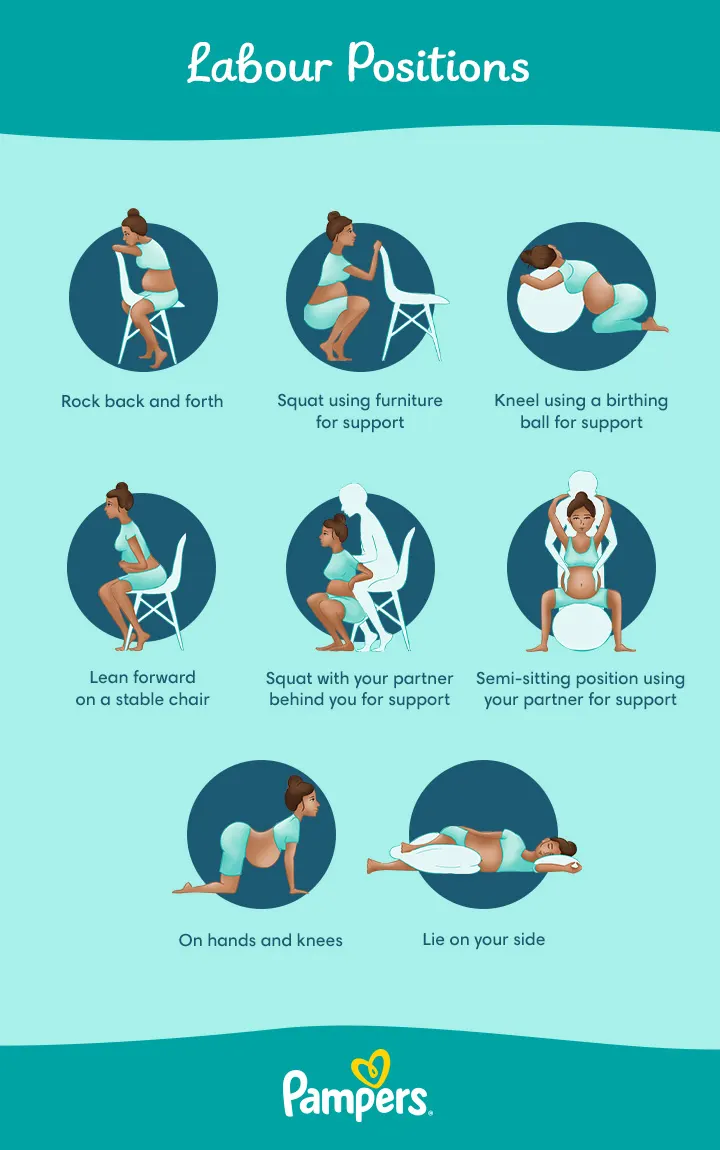39 weeks pregnant
Congratulations on reaching the 39th week of pregnancy! It marks the final leg of your pregnancy journey and you’re on the verge of welcoming your precious baby into the world. We’re here to guide you through the wonders of being 39 weeks pregnant, offer helpful tips and information to support you, and help you recognise the symptoms you may experience as well as the signs of labour approaching.
Highlights at 39 Weeks Pregnant
Congratulations! Your pregnancy has reached full term, meaning it's almost time to meet your little one! Here are a few highlights:
At week 39 of pregnancy, your baby is now about the size of a mini watermelon.
Keep an eye out for signs that labour is near or has already begun, such as losing your mucus plug or experiencing your water breaking.
It's a good idea to start thinking about labour positions, and our visual below can illustrate some that you may find helpful.
Remember to take some time to relax and unwind during these final days or weeks of your pregnancy. You've done an amazing job!
And if you're looking for some inspiration for baby names, try our Baby Name Generator.
BABY NAME GENERATOR TOOL

Baby name generator
By gender:
By theme:
Your Baby’s Development at 39 Weeks Pregnant
Even if you’re experiencing no signs of labour at 39 weeks pregnant, there isn’t long to wait now. You’re probably only a few days or weeks away from being able to finally gaze into your little one’s eyes.
Contrary to what you may think, those eyes might not be blue when your baby is born. Depending on their genetic makeup, your newborn’s eyes could be anything from slate grey to black.
The colour of your baby’s eyes can change after birth, and their final hue may not be revealed for up to three years. Read up on when babies’ eyes change colour here.
To ease your little one’s passage into the outside world, their skin is now coated in a waxy, white substance called vernix. This slippery coating will make it easier for your foetus to pass through the birth canal, if you give birth vaginally.
The vernix helps protect your little one’s sensitive skin during birth, but that’s not all. This special coating will keep on working its magic for a little while afterwards too: It’s a natural moisturiser, and also protects against infection in the first few days after your baby’s born.
This is why it’s important to let any patches of vernix remaining after birth absorb naturally into your baby’s skin.
How Many Months Is 39 Weeks Pregnant?
It’s common to wonder, ‘What is 39 weeks pregnant in months?’ Although the weeks can be grouped into months in various ways, you’re generally considered nine months pregnant at 39 weeks.
Your Baby's Size at 39 Weeks Pregnant
Now that you’re in your 39th week of pregnancy, your baby is about the size of a small watermelon, measuring close to 50.7 centimetres from head to heel, and weighing in at around 3.3 kilograms (7.2 pounds).
Your Baby: What Does 39 Weeks Pregnant Look Like?
Space is at a premium inside your belly this week! This illustration can give you a general idea of how your baby may be positioned at 39 weeks:
Your Body at 39 Weeks Pregnant
At 39 weeks pregnant, be on the lookout for signs that labour is approaching.
Some of the signs of labour to look out for at and around 39 weeks pregnant include
period-like pains
regular and painful contractions
the breaking of your waters, which could be a flow or just a trickle of fluid from your vagina
a ‘show’, which is when the mucus plug sealing your cervix becomes detached and leaves your body via the vagina in the form of a pink or bloody mucus discharge. Although a ‘show’ is an early sign that labour could start soon, it doesn’t necessarily mean you’ll be giving birth within the next few hours. It could still be a few days yet. So, if you notice this bloody discharge at 39 weeks pregnant, keep an eye out for other signs of labour before heading to the hospital.
Some other signs of labour can be more subtle, and perhaps easier to confuse with other symptoms of pregnancy. These might include feeling sick/nausea, diarrhoea or an unusual pain in the lower back at or around 39 weeks pregnant.
Keep in mind, some symptoms that you may experience at around 39 weeks pregnant should not be ignored, as they could be a warning sign of a problem that needs immediate attention.
Call your midwife or doctor straight away if you experience any of the following:
Vaginal bleeding
A severe, persistent headache
Vision problems (blurred vision, sensitivity to light, seeing spots)
Sudden, extreme swelling of the face, hands, feet and ankles
Severe itching, especially if it’s worse at night
Pain just below the ribs
A high temperature of 37.5 degrees Celsius or more, with no other symptoms of cold or flu
Stomach pain that doesn’t go away.
Your Symptoms at 39 Weeks Pregnant
Here are some of the symptoms you may be experiencing at 39 weeks pregnant:
Trouble sleeping. It may be more difficult to get a good night’s sleep at 39 weeks pregnant. The size of your belly may make it hard to get comfortable, and nerves and anxiety may keep you up, too. Try to make your bed and bedroom as comfortable as possible. The safest position to sleep in is on your side, especially in the third trimester, as sleeping on your back may interfere with the flow of blood to your foetus. Don’t worry if you go to sleep on your side and wake up in a different position though: It’s the position you’re in when you drop off that counts, as this is how you’ll spend most of the night. To get more comfortable at and around 39 weeks pregnant, try using pillows to support your bump, and put another between your knees for extra support.
Lower back pain. At 39 weeks pregnant, your protruding belly shifts your balance forward, straining your back muscles. Relaxin hormone loosens your joints, putting pressure on your muscles. Rest, good posture, and proper lifting techniques can prevent back pain. Bend at the knees when picking things up, avoid twisting your spine when you turn, and keep a straight back when you sit or stand. If you think you might need pain relief for backache, ask your doctor what medication you can safely take at 39 weeks pregnant. Keep in mind that unusual or constant pain in the lower back might also be a sign of impending labour, especially if it’s accompanied by other labour symptoms.
Piles (Haemorrhoids). Piles are painful or itchy swellings caused by enlarged veins in or around your rectum and anus area. Symptoms of haemorrhoids can include an itchy or sore bottom or aching and swelling around the anus. Although you don’t have to be pregnant to get piles, certain pregnancy hormones can make them more likely to occur at this time. At 39 weeks pregnant, the weight of your uterus on your blood vessels can also make things worse. If you suffer from constipation, straining to pass a bowel movement can also cause those little veins to pop out. To help prevent this, make sure you drink plenty of fluids and keep to a healthy diet with enough fibre.
What Size Is a Pregnant Belly at 39 Weeks?
Your uterus has expanded over the course of your pregnancy, but the size of your bump at 39 weeks might differ from other pregnant people – everyone is different!
At your most recent antenatal appointment, your doctor or midwife will likely measure the size of your uterus to check that you and your baby are on track.
What Does 39 Weeks in Pregnancy Look Like?
If you want a general idea of how your belly might look around 39 weeks pregnant, take a peek at the image below.
Things to Consider at 39 Weeks Pregnant
As you reach your due date, you might like to consider some of the following things:
When labour starts, depending on what your symptoms are, your midwife may advise you to stay at home a little longer and time your contractions until they reach a certain level of intensity. You may also find it more pleasant to spend this early stage of your labour in the familiar, comfortable surroundings of your own home. Your midwife or doctor will advise you on what to do, but it’s usually time to head out the door if your contractions are coming every 5 minutes and last for at least 60 seconds each. When discussing with your midwife when to leave for the hospital or birthing centre, make sure you factor in how long it will take to get there.
Be aware that in some circumstances your doctor or midwife may recommend inducing labour. This might be because your little one is overdue, or labour hasn’t started spontaneously even though your waters have broken. Induction could also be necessary due to a complication that could endanger your or your baby’s health. For example, you might have high blood pressure, which carries a risk of a rare but serious condition known as pre-eclampsia. Or your little one may not be growing. If the need arises, you’ll usually have a chance to discuss induction with your midwife and doctor.
When you give birth, you may find that events unfold a little differently to what you had imagined or expected. For example, not all babies cry out immediately. If it takes a few seconds before your little one cries or splutters to clear their airways, don’t worry. The doctors are there to check on your little one and make sure things are going well. In the first minute of being born, your little one will have their heart rate, breathing, muscle tone, responsiveness and skin colour checked. Don’t be alarmed by blue hands and feet, or redness in other areas of the skin, either. It can take a while for your baby’s circulation to get going.
For some mums it’s love at first sight, for others forming a close connection can take a little longer. Activities that involve touch, like bathing your little one, can help strengthen that bond, but there’s no need to feel guilty if you’re flooded with all sorts of conflicting emotions after the birth. It helps to be aware of the signs of postnatal depression, which is more common among new parents than you might think. Don’t hesitate to ask for help if you need it. The first few weeks with a newborn can be a bit of a rollercoaster ride at the best of times. It might help to keep in mind that this is just the very beginning of a lifelong process, which might hold plenty of challenges in store, but also promises to bring at least as many magical moments for you, your little one and all those around you.
What’s in store after you give birth? It might help you feel more reassured and comfortable with what’s to come if you read up on your postpartum recovery and healing as well as on newborn baby care basics like umbilical cord care and how to change a nappy.
Once you’re in labour, you may find some positions more comfortable than others. For example, some people give birth in a hospital bed while reclining with their feet in stirrups, and others may use a birthing chair or stool, depending on the policies and available facilities at your local hospital.
You could use a birthing ball that lets you rock back and forth when contractions strike. You might also like to try squatting, standing, or kneeling during labour if your medical team gives you the OK to do so.
You might like to have a birth plan that outlines how you want to go through labour and some possible comfort techniques. However, keep in mind that your preferences may change when you’re actually in labour and that you'll need to be flexible when the time comes. Check out the visual below for some examples of labour positions you might like to try:
Tip for Partners Your little one could arrive any day now – so help your pregnant partner prepare for your new arrival. Help them pack their hospital bag with all the essentials, ensure you know your action plan for when labour begins (how you’re getting to the hospital and the route), and make a schedule for when you need family and friends to help out during and after the birth. |
Questions for Your Doctor at 39 Weeks Pregnant
Here are some questions you might like to ask your doctor or midwife at 39 weeks pregnant:
What are some symptoms not to ignore at 39 weeks pregnant? If you experience vaginal bleeding, a severe persistent headache, vision problems (blurred vision, sensitivity to light, seeing spots), or sudden swelling of the face, hands, feet and ankles at or around 39 weeks pregnant, contact your doctor immediately.
How can I track my baby’s movements at 39 weeks and in these last few weeks of pregnancy?
If my baby is in a breech position, will an attempt be made to turn them to a head-down position?
In what circumstances would labour need to be induced?
If I give birth vaginally, will labour and delivery be in different rooms at the hospital or birthing centre?
What will happen if I’m scheduled to give birth via a caesarean section? Where should I go once I’m at the hospital, and can someone be with me in the operating theatre?
How many people can be with me during labour and delivery at the hospital?
Is taking pictures or videos allowed in the delivery room?
What should I expect to happen in the first few hours after giving birth?
Can I expect skin-to-skin contact with my baby immediately after they are born?
What are the visiting hours should people want to visit me and my newborn?
FAQS AT A GLANCE
Labour can be delayed for a variety of reasons. It might be because your baby is in an awkward position, or your contractions aren’t strong enough to open the cervix. Sometimes, stress or anxiety can also slow things down. Your doctor and midwife will be there to support you through this process and discuss any options to speed things up if needed.
39 Weeks Pregnant: Your Checklist
As your due date approaches, you might want to check a few more things off your list:
You still have time to do some shopping (even if it’s online!) and source any of those missing items you need for your newborn. Check out our newborn essentials list to double-check that you have everything you’ll need.
You’ve come a long way and you’ll soon meet your baby, but whether you’ve found pregnancy exhausting or magical – or a mixture of both, take a moment to soak in the feeling of being pregnant in your final days or weeks – it’s a period you’ll remember forever.
If you’re still at work, start wrapping things up and leave notes or onboard your colleagues who will be managing things while you are on maternity leave.
If you plan to bottle feed your baby, stock up on baby formula.
If you haven’t already and you like the idea of keeping details of your little one’s first year written down, buy a ‘my first year’ baby book as a memento.
If you haven’t already, plan who will take care of your pets and older children when you go into labour and during your hospital stay.
Get a baby first aid kit and have it stocked up.
Protect your mattress with a waterproof sheet or cover in case your waters break during the night.
Stock up on nappies and wipes for your newborn.
How We Wrote This Article The information in this article is based on the expert advice found in trusted medical and government sources, such as the National Health Service (NHS). You can find a full list of sources used for this article below. The content on this page should not replace professional medical advice. Always consult medical professionals for full diagnosis and treatment.
39 weeks pregnant - checklist



